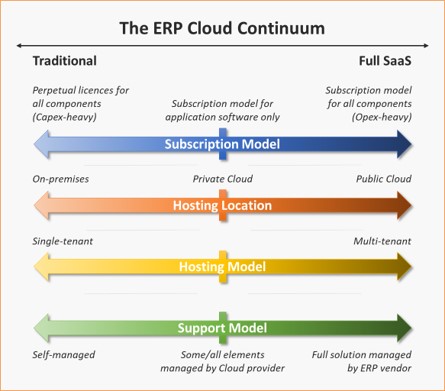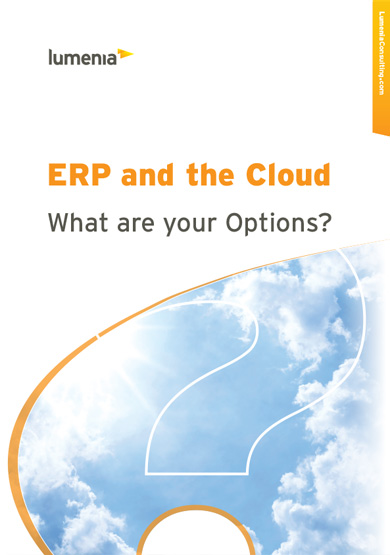ERP and the Cloud - what’s the scoop?
With the ever-increasing uptake of Cloud solutions, we are constantly asked how the various deployment options for ERP stack up. There are as many flavours of ‘Cloud’ as there are ice-creams, so we have set out the fundamentals in our latest whitepaper,'ERP and the Cloud, What are Your Options?'.
From multi-tenant Software-as-a-Service (SaaS) to private hosted solutions with perpetual software licences, there’s a Cloud deployment model to suit almost every palate. And for those who prefer traditional vanilla, there are plenty of on-premises options too. Each deployment model can be defined by its position on a series of dimensions in our ‘Cloud Continuum’:

We describe 4 of the most common deployment scenarios in our free whitepaper and set out the pros and cons of each:
- Traditional on-premises solutions;
- Hosted solutions / Infrastructure-as-a-Service (IaaS);
- Single-tenant SaaS solutions (managed by the ERP vendor); and
- Multi-tenant SaaS solutions.
Whether you ultimately opt for one of these or one of the many hybrid variations, we explore important factors to help you make an informed selection decision. We consider issues such as:
- Reliance on internal IT infrastructure and resources – there are substantial capability and cost trade-offs in outsourcing your ERP infrastructure, service management and support activities to a Cloud-provider;
- Total Cost of Ownership (TCO) – your ERP deployment approach has a direct bearing on whether licence costs are incurred as up-front CAPEX (perpetual licences) or ongoing OPEX (subscriptions). TCO can stack up quite different for those models over an extended period;
- Requirements for customised solutions vs. out-of-the-box functionality – a high degree of ERP customisation and integration required by your business (as distinct from configuration), can rule out or complicate some SaaS options;
- Security, control and data residency – the comparative security risks associated with different deployment models need to be understood, as perceptions and reality can vary. Organisations with strict data residency requirements may have more limited options;
- Availability, performance and scalability – non-functional factors such as these can significantly impact user experience and efficiency. Some deployment types may better suit your business than others, depending on your geographic footprint;
- Maintenance and support implications– organisations that struggle to keep their software versions up-to-date may benefit from a SaaS model that forces you to keep up with the latest patches and releases. However, there are trade-offs between that rigidity and the need to adequately maintain and test any non-standard customisations and integrations;
- Disaster Recovery (DR) – your selected deployment model needs to be compatible with your own DR strategy and capabilities, or present a viable alternative.
Cloud ERP will continue to grow as vendor offerings and Cloud technologies mature. Make sure you know what flavours are out there and understand their main ingredients, so you can judge what’s right for your business as you embark on your ERP selection journey.

Download Lumenia’s latest whitepaper, 'ERP and the Cloud, What are Your Options?', to find out more.
This blog was written by Edward Abrahamson Principal Consultant at Lumenia. For further information please send an email to Edward Abrahamson.


